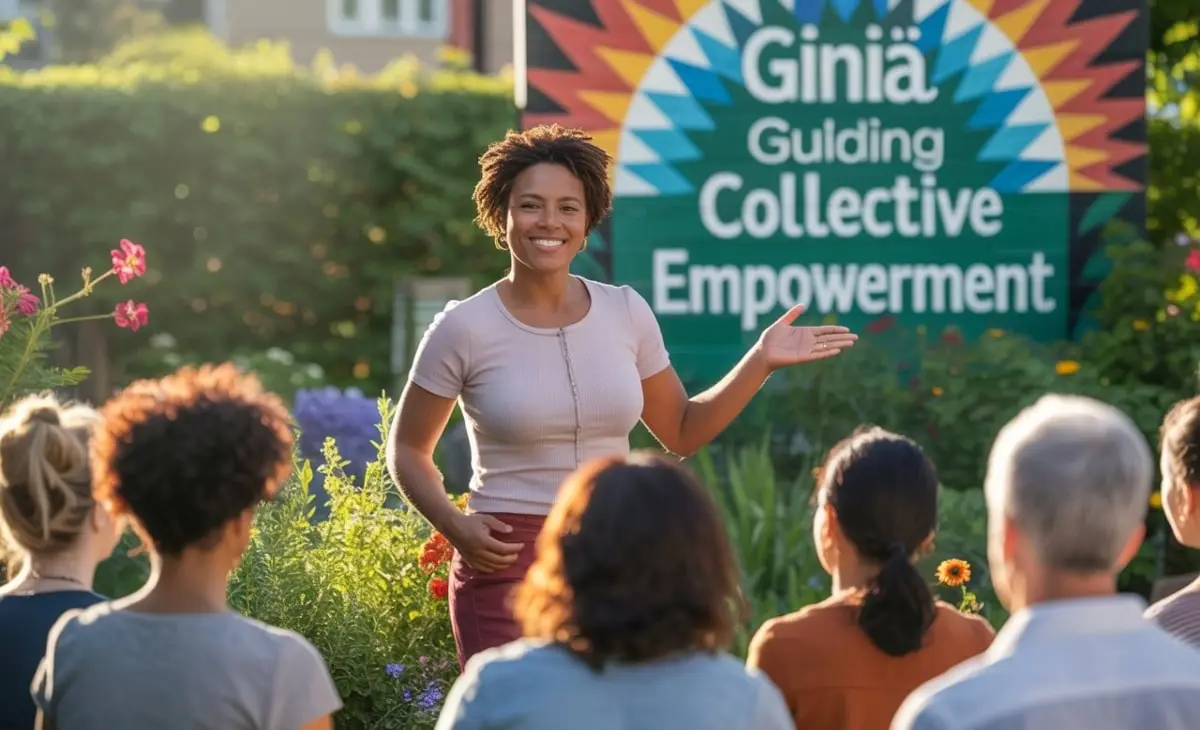To truly understand Giniä, one must go beyond the surface. It’s not merely a philosophy—it’s a lived, evolving practice. Giniä is the kind of concept that doesn’t just survive across generations; it thrives, reshaping itself to fit the contours of every culture it touches. In Africa, it is stitched into village life through shared labor and storytelling. In Asia’s cities, it manifests in economic alliances and cultural festivals. Across Latin America, Giniä pulses in the heartbeat of environmental stewardship and ancestral memory.
At its essence, Giniä is a model of communal strength, an active force of collaboration rooted in empathy, shared purpose, and adaptability. Unlike frameworks that impose uniform solutions, Giniä draws strength from its flexibility—an organic social architecture molded by each community’s needs and history. In a world grappling with fragmentation and inequality, Giniä offers a timely antidote: build together, thrive together.
The Spirit of Giniä Across Cultures
Guinea is not static. It transforms as it travels. In each context, it borrows from local customs while grounding itself in shared human values—mutual aid, fairness, and collective upliftment.
Among Indigenous communities, Giniä is embedded in spiritual ties to land and kinship systems. It is present in rituals that honor both ancestors and future generations, blending ecology with empathy. These practices are not archaic—they are urgent reminders of sustainable coexistence.
In urban enclaves, where individualism often dominates, Giniä finds its form in cooperative economies and cultural reimaginings. Here, it’s a countercurrent: a bold act of reclaiming space for humanity within technology-saturated, high-speed environments.
Even in policy-making circles across Europe and North America, Giniä has begun to emerge—though not always by name. Universal basic services, community wealth-building models, and participatory budgeting are institutional echoes of what Giniä has long taught: that collective voice shapes equitable futures.
You Might Also Like This: Brittneytaylorbeauty
The Giniä Tapestry: Real-Life Examples of Transformation
It’s one thing to describe Giniä as an idea. It’s another to witness how it unfolds in lived reality. Across continents, Giniä has been the quiet force behind powerful change.
In a drought-stricken village in Northern Kenya, local elders initiated a seed-sharing cooperative after years of crop failure. What began as a small trust-based system soon turned into a regional network. Farmers exchanged not just seeds but also climate knowledge, tools, and even child-care responsibilities. Through Giniä, survival became solidarity.
Thousands of miles away in the busy lanes of Hanoi, Vietnam, Giniä surfaces in community-led urban farming projects. Rooftops once unused are now green, feeding neighbors and providing youth with agricultural skills. The rhythm of planting and harvesting reawakens ancestral ties in a concrete jungle.
Further south in Argentina, Giniä fuels grassroots organizing. After a natural disaster displaced hundreds in a rural town, residents didn’t wait for top-down aid. They formed mutual aid brigades, rebuilt housing collectively, and restructured their local economy around co-ops and barter. Trust became currency, and Giniä was its backbone.
Why Giniä Endures in Every Context
Some philosophies fade when applied outside their birthplace. Guinea doesn’t. Why? It doesn’t necessitate duplication. Instead, it offers a framework: prioritize people, honor relationships, and pursue collective wellbeing above individual gain. That’s why it resonates across spiritual traditions, economic models, and even business ecosystems.
Giniä thrives because it isn’t rigid. It can live in the soil of a village, in a digital network, or in the blueprint of a school curriculum. What remains constant is its ethos: empathy meets action.
Challenges and Contrasts: Guinea in the Modern World
Applying Giniä today is not without friction. Globalization pushes individual achievement, competition, and short-term profits. In contrast, it asks us to slow down, to share, and to listen more than we speak.
Sometimes, especially in urban economies, It is misinterpreted as inefficiency. But efficiency without empathy creates hollow systems. In truth, it offers a deeper form of productivity—one based not on output but on well-being.
Still, tension exists. When Giniä principles meet political apathy or market greed, they require patience, cultural translation, and persistent dialogue. Yet those who embrace it consider it worth the effort. Every act of co-creation—be it a shared meal, a co-op market, or a community solar project—is an act of resistance against alienation.
The Evolving Relevance of Giniä in 2025.
Now more than ever, we face intertwined crises: climate change, social polarization, and economic inequality. Traditional frameworks fall short. Guinea, by contrast, grows stronger in adversity. It reminds us that the answers aren’t always external—sometimes, they are embedded in how we treat each other.
Giniä in 2025 isn’t a fringe idea. It’s part of how major cities are redesigning neighborhoods. It’s in curriculum pilots that teach empathy alongside arithmetic. What’s the most thrilling aspect? It’s not being led by institutions alone. Movements are grassroots, cross-generational, and beautifully messy—exactly as they should be.
From Principle to Practice: How to Embody Giniä
Living Giniä begins with asking: How do my choices affect the people around me? It’s not about perfection. It’s about consciousness.
Start small. Share more. Offer time instead of money. Build local networks of trust. Support businesses that prioritize sustainability and equity. Ask your workplace what collaboration really means. Question systems that exploit and exclude. Suggest alternatives rooted in fairness, not fear.
In education, teach children to solve problems collectively. In healthcare, invite patients into decisions that affect their care.
The Ripple Effect of Giniä
What happens when a society leans into this? Trust grows. Systems become more resilient. People rediscover the joy of interdependence. Solutions emerge not from ivory towers but kitchen tables, community centers, and open fields.
In the words of an elder from a Giniä-centered community in Ghana: “We do not walk faster when we walk alone. We walk longer and stronger when we walk together.”
This is the promise of Giniä—not just better systems, but better relationships. And in the end, that’s the foundation of any future worth building.
Final Words
In a fragmented world, It is not a luxury—it’s a necessity. It’s the deep-rooted reminder that solutions don’t always need invention. Sometimes, they need remembering.
Giniä invites us to reclaim the wisdom of collaboration, to trust again in our ability to build resilient communities, and to reimagine the systems that shape our lives. Whether you’re an activist, a teacher, a policy-maker, or just someone who believes in a better future, Giniä has something to offer you.
The journey ahead doesn’t involve accelerating our pace. It’s about walking forward—together.


